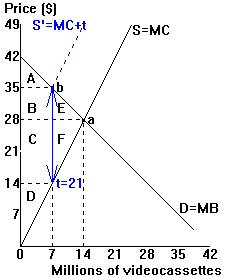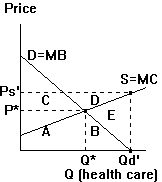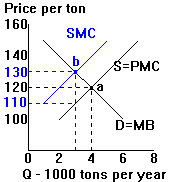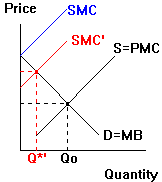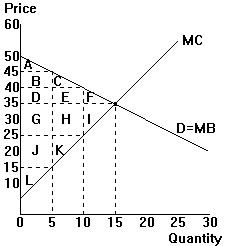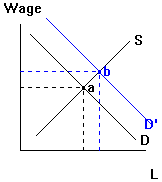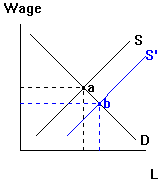| BASIC ANALYSIS OF GOVERNMENT POLICIES | |||
|
1. |
Suppose that the diagram to the right depicts the student market for tutoring services. |  |
|
| a. | Indicate in the diagram and compute the value of consumer
surplus and producer surplus. CS = ABE = $180. PS = CDF = $180 |
||
| b. | Suppose that government concern over student access to tutoring services results in the imposition of a price ceiling of $3 per tutoring session. Depict the consequences of the price ceiling in the diagram. Does a surplus or shortage result? How large? Pc = 3 --> Qs = 30; Qd = 90 | ||
| c. | Compute the new values for consumer and producer surplus and
for the welfare loss associated with the price ceiling. Indicate these areas in the
diagram. New CS = ABC = $225. New PS = $45 Welfare loss = EF = $90 |
||
| d. | Comparing your answers in parts a and c, why do you think consumers might lobby for price ceilings despite the resulting inefficiency? CS rises. | ||

